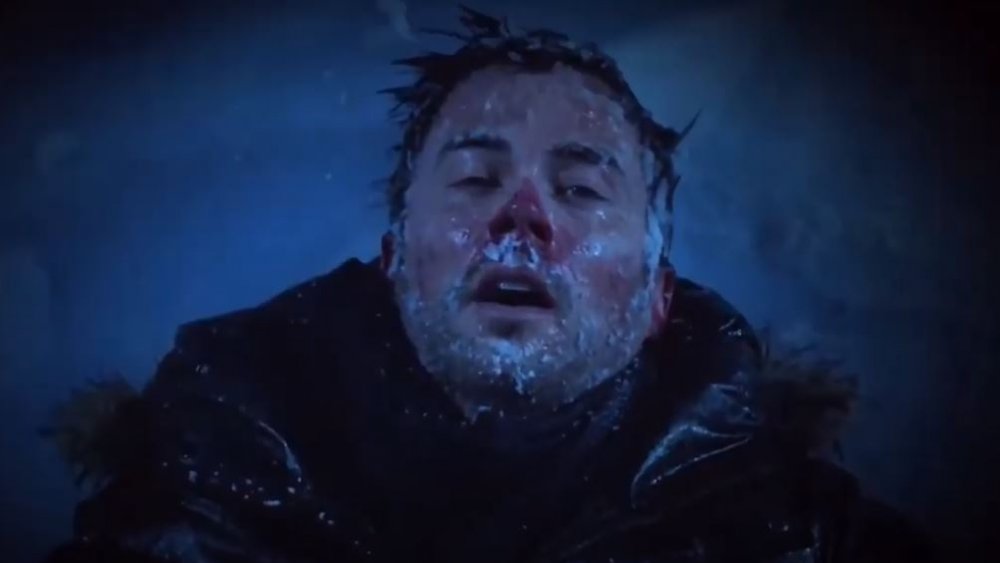SPOILER ALERT: Contains spoilers from all available seasons (1-3)
Calling all manifesters! We’re here to discuss the 828 lifeboat and all the juicy stories that run through Netflix’s Manifest. If you’ve been a fan of the show, it’s not news to you that NBC cancelled the show at the apex that is the season 3 finale. After months of twitter-campaigning, WE DID IT. Netflix picked up the show for the fourth and final installment of Manifest.
My business is writing and stories, so that’s what we’re here to discuss. Far too often in English and Professional Writing, we don’t view film as text to be analyzed, cultural microcosms that capture the essence of the time it’s coming from, but it is. While there are film experts who study these things, and there are even English and Professional Writing scholars who do study film and TV in this way, it is heavily associated with communications and film students. There is a tremendous benefit to analyzing your favourite films and TV shows to sharpen your understanding of narrative techniques. If you loved it, they did something right. If you hated it, there’s something you can learn, and take away what didn’t work.
Manifest is a social phenomenon. The NBC show stole number 1 on Netflix’s Top 10 charts for 100 days, only the third show in Netflix history to do so, and re-entered the number 1 spot a whopping 31 times. This was no accident. Manifesters rallied together to get someone, anyone, to pick up the show after season 3.
So, what’s the big deal about Manifest?
Full-disclosure, I was part of the Twitter revolution to #SaveManifest, and I am so proud to see that if we can come together on the simple basis of liking a story, imagine what we could do if we could agree on other things. Manifest is and will forever be the most addictive TV show I have ever watched.
So, how did my obsession begin?
I sat down with Netflix on a random Saturday morning and saw that a new show had been dropped. I didn’t bother watching the trailer. Based on the synopsis alone, I knew that this was the beautiful blend of fantasy, reality, and absurdism that I adore. So, I clicked episode 1 and spent the next two days binging all three seasons. I didn’t wait for Netflix to drop season 3, I purchased it because I needed to know what happened. After watching it, I watched it again. Then I watched it again. Every single time I would find new details that thickened the plot, more “coincidental” set placements, house numbers, and even symbols. But if you know anything about Manifest, you know that “it’s all connected.”
I took a second to step back and ask myself why I loved this show so much. Was it the stellar acting? The insane storyline? Endearing characters? Then I realized, it’s all of them.
Jeff Rake, executive producer of Manifest, had a 6-season plan, and it shows. Release dates co-related with important “lifeboat” dates. If NBC had allowed Jeff Rake to continue the show for 3 more seasons, the release of season 6 would have lined up with the death date, June 2, 2024. This man is a genius who thinks about minute details. The announcement that Netflix confirmed they picked up Manifest was on the infamous 828-day, August 28, 2021! Needless to say, this producer is thinking about real-world coincidence. The intention behind layered symbols, metaphors, and meanings hidden in this show are a testament to that attention to detail. There is no escaping the reality that Jeff Rake thinks about minutiae.
So, let’s talk story. There was something intrinsic about the beginning of Manifest, a pull, a draw that I could not explain to myself. I simply had to know more. If you’re reading this you’ve either watched it or bypassed the spoiler warning, but I’m giving you another out. If you have not watched Manifest, go to Netflix and come back here once your brain has been amazed.
I loved the simple beginnings in Manifest. I am personally a fan of creating ordinary scenes that lead to extraordinary events, and this show hit that vibe exactly. We start in an airport watching a family going home from Jamaica. Everything seems normal, they have problems like any other family, relationship drama, children with illnesses, but they seem like a cohesive family trying to make the best of their situations.

Everything’s fine until Ben, Cal, and Michaela rebook themselves from their original flight to flight 828. The genius of this whole thing is that the pilot episode sets precedent and holds a lot of keys to the mystery of 828. The details of who was there, how the plane felt in the turbulence, it all goes back to the original flight. I think it was a smart decision to follow the people on flight 828, because by witnessing their perspective, we ally ourselves with the passengers. They become the torchbearers of the story.
We see severe-ish turbulence, and things seemed normal until the announcement that they were being re-routed to a different airport. Imagine getting off a 3-hour plane ride to find out you’ve landed 5 years later than originally scheduled. You haven’t aged a day. That’s insanity for both the people on the plane, and the people they left behind. But what happens when someone goes missing for 5 years? Their world moves on without them. And that’s exactly what happened with Ben’s family, and Michaela’s almost-fiancé, Jared Vasquez.

This dynamic, of a 5-year gap with a magical, surrealist, supernatural vibe is an interesting place to build a story. As a lover of horror, fantasy, and anything in between, I see the strings that set up the primary and secondary worlds. In the study of English literature, specifically the mechanisms of the fantasy genre, we see a normal everyday family turned into a supernatural-plane-vanishing-miracle-return. We see the primary world, that looks and feels like the world we live in. As we board flight 828, we begin the stages of stepping into the secondary world. We’re not fully immersed in the secondary world at this point but have dipped our toes into the “we’ve taken impossible off the table” pool.
We don’t know what to believe at this point, as viewers or passengers. These people haven’t aged, took a 3-hour flight, and landed 5 years in the future. Is it aliens? Ghosts? God? There are no answers, and even the clues hidden in the show lead us to more questions.
On the re-watch of Manifest, I was shocked at how much of the plot was unravelled in the first season. There are several key discoveries through season 1 that help us to launch into a clear understanding of the death dates. But a clear understanding of the death dates can only be achieved by watching the three seasons as a whole narrative. There were some comments online that questioned the rarity of this time-stopping-resurrection-phenomenon if not one, not two, but four incidences of this “dark lightning storm” have been recorded within the duration of the show.
From a narrative perspective, each of these incidences taught the 828 lifeboat an important lesson about the way this whole death-date works. The first discovery of another “time traveller,” post-accepting the callings, was James Griffin. For those of you who don’t remember, James Griffin was the criminal who drove a van into the East River in New York after robbing a bank and turning on his team. The van was submerged in water for 82 hours and 8 minutes. Yup, 828. This man doesn’t follow his callings and ends up drowning on dry land exactly 82 hours and 8 minutes after he “returned.” This was the very first time that we learned about the death-date.

The second resurrection was Zeke. We are all on the Michaela and Zeke ship, and none of us wanted to watch Mik watch Zeke die knowing that it was her fate as well. Zeke’s death-date came and went, and he survived by listening to the callings and fulfilling the visions. From this case, we learned that you can survive the death-date.

The third and final resurrection was deemed “overkill” by many fans, because 4 resurrections doesn’t exactly scream “this is rare.” However, I am here to tell you why this final resurrection story is the catalyst for understanding the “lifeboat.” The “Meth Heads,” Jace, Pete, and Kory were the first group resurrected together since flight 828.

Season 3 episode 6, “Graveyard Spiral,” was one of the wildest episodes of the show. I have always been a fan of the high-tension-race-in-the-wilderness trope. It’s one of my favourite tropes because every single time I’ve seen it done, it’s been unique and worked for the stories it was included in (hello season 4 finale of The Handmaid’s Tale – Wilderness). Manifest was no exception. We had been dealing with the issue of the Meth Heads even before they were resurrected, and with that screen time, came a genuine love or hatred for those characters. Personally, I loved Kory and Pete. I thought they were simply two kids who were pulled into crime by circumstance and poor association. But Jace, well, he was the poor association. I’d like to give kudos to the actors, James McMenamin (Jace), Dazmann Still (Kory), and Devin Harjes (Pete). These three created such dynamic characters with layered relationships within their group that I felt so connected to their stories.
We learn about the “lifeboat” from this third resurrection because Jace, the poor association who genuinely is a horrible person, sunk the lifeboat. Pete and Kory both chose differently, they listened to their callings, they wanted to change, but Jace’s insistence on choosing violence literally dragged Pete and Kory to their deaths. This is how we learn about the lifeboat. We now know that if one of the passengers chooses not to follow their callings, they all “sink” as a result.

While I do agree that for such an anomalous experience, like being resurrected by dark lightning, it is a little “coincidental” to have four back-to-back incidents. However, I also think it’s important to consider the narrative significance of these resurrections, and the contributions they make to our understanding of Manifest’s “magic system.” These characters and stories help us unfold some of the mysteries behind flight 828.
This is just one of the hundreds of innovative storytelling techniques in Manifest.
Have any Manifest theories, narratives you didn’t enjoy, or topics you’d like me to cover? Leave a comment below!
Note: I announced a season 1 review, but after consideration, I will be doing reviews of narrative techniques instead.





Leave a comment